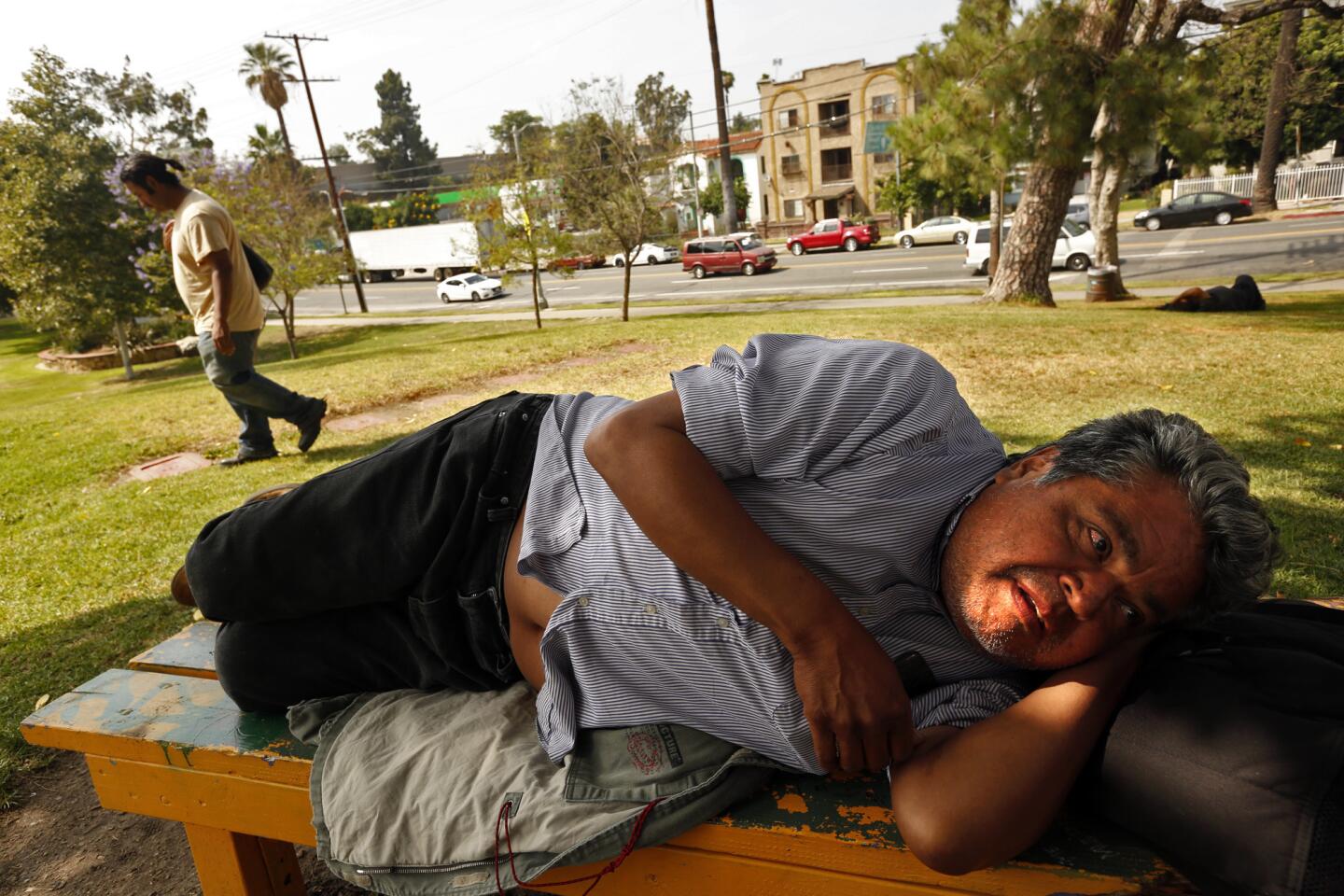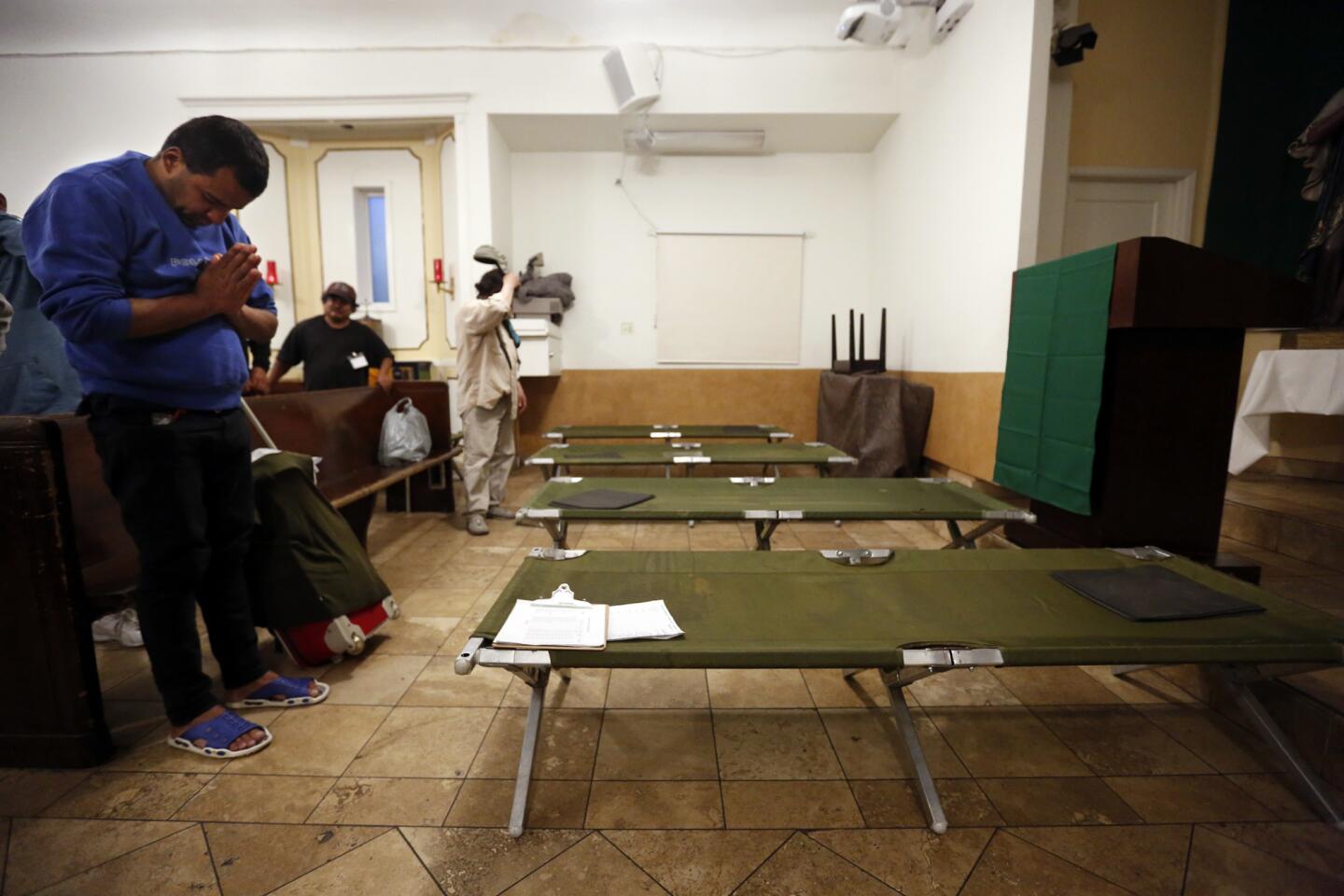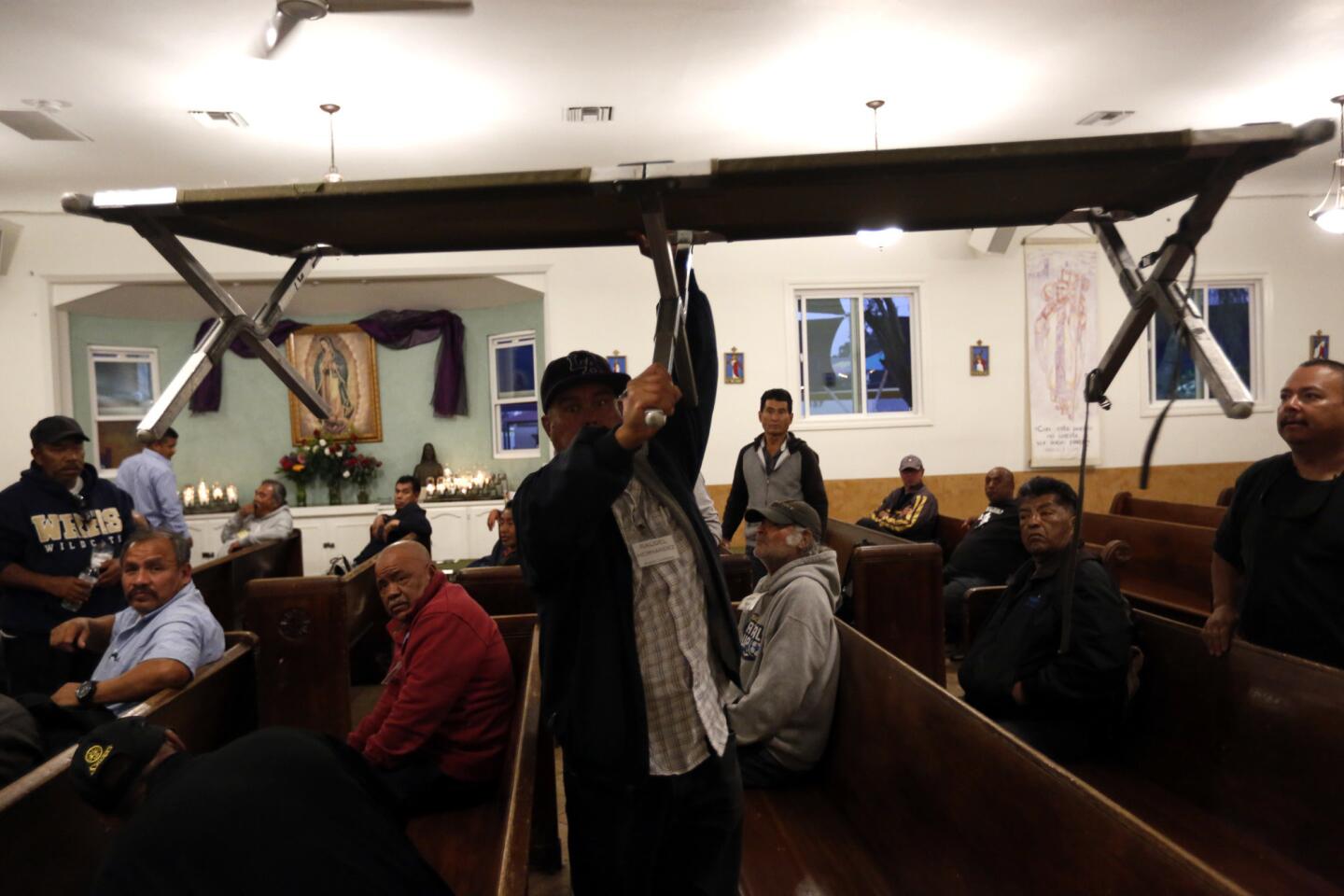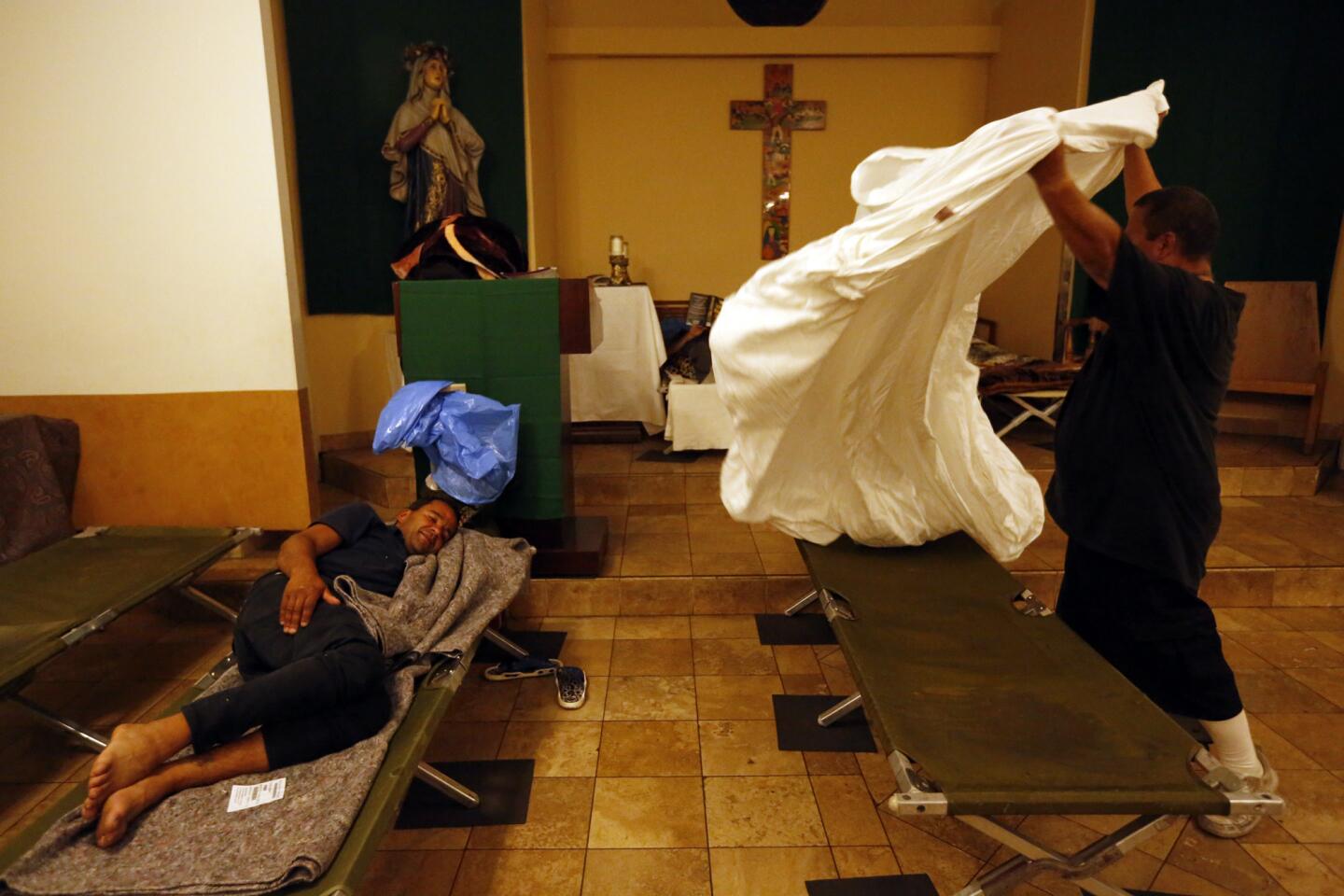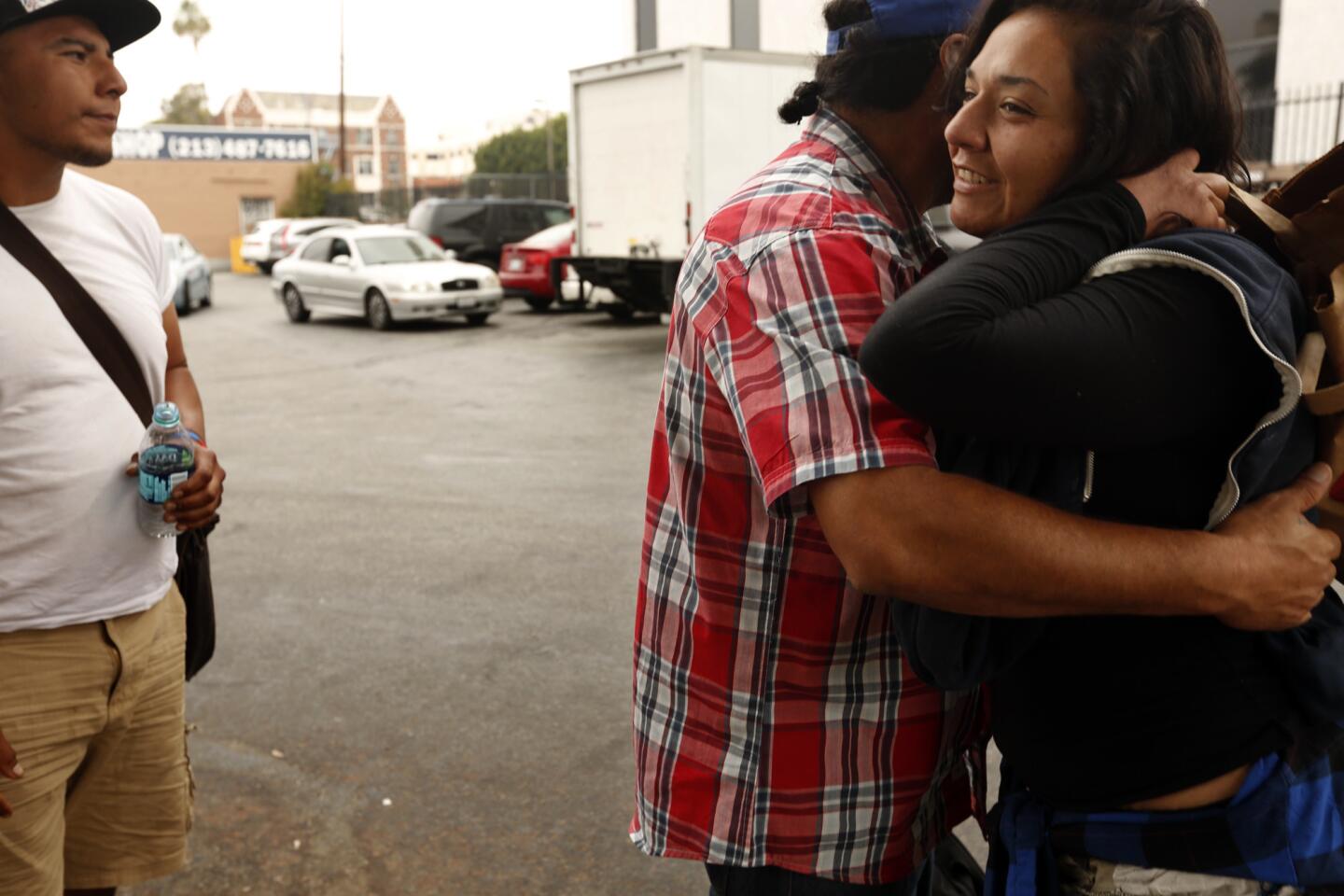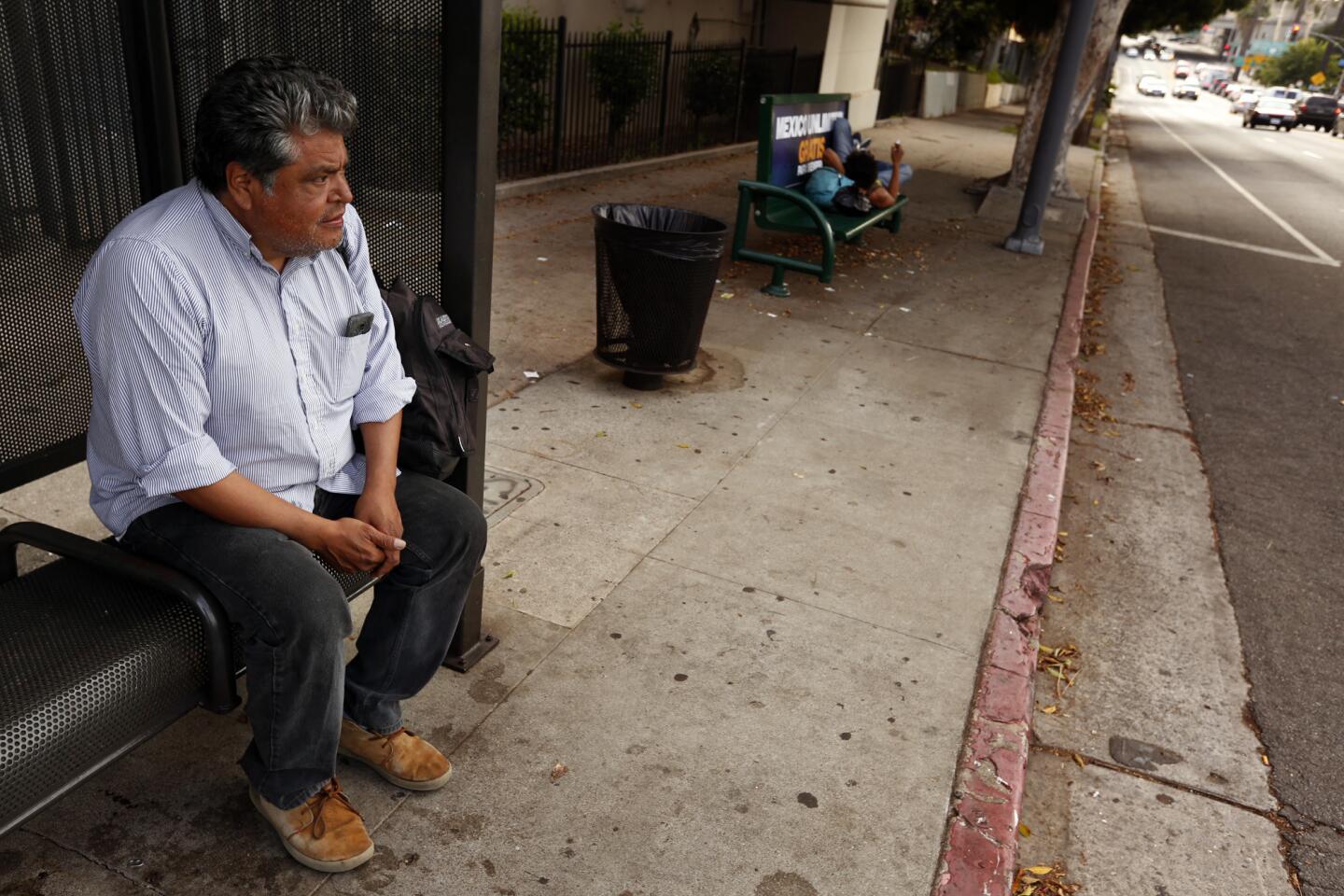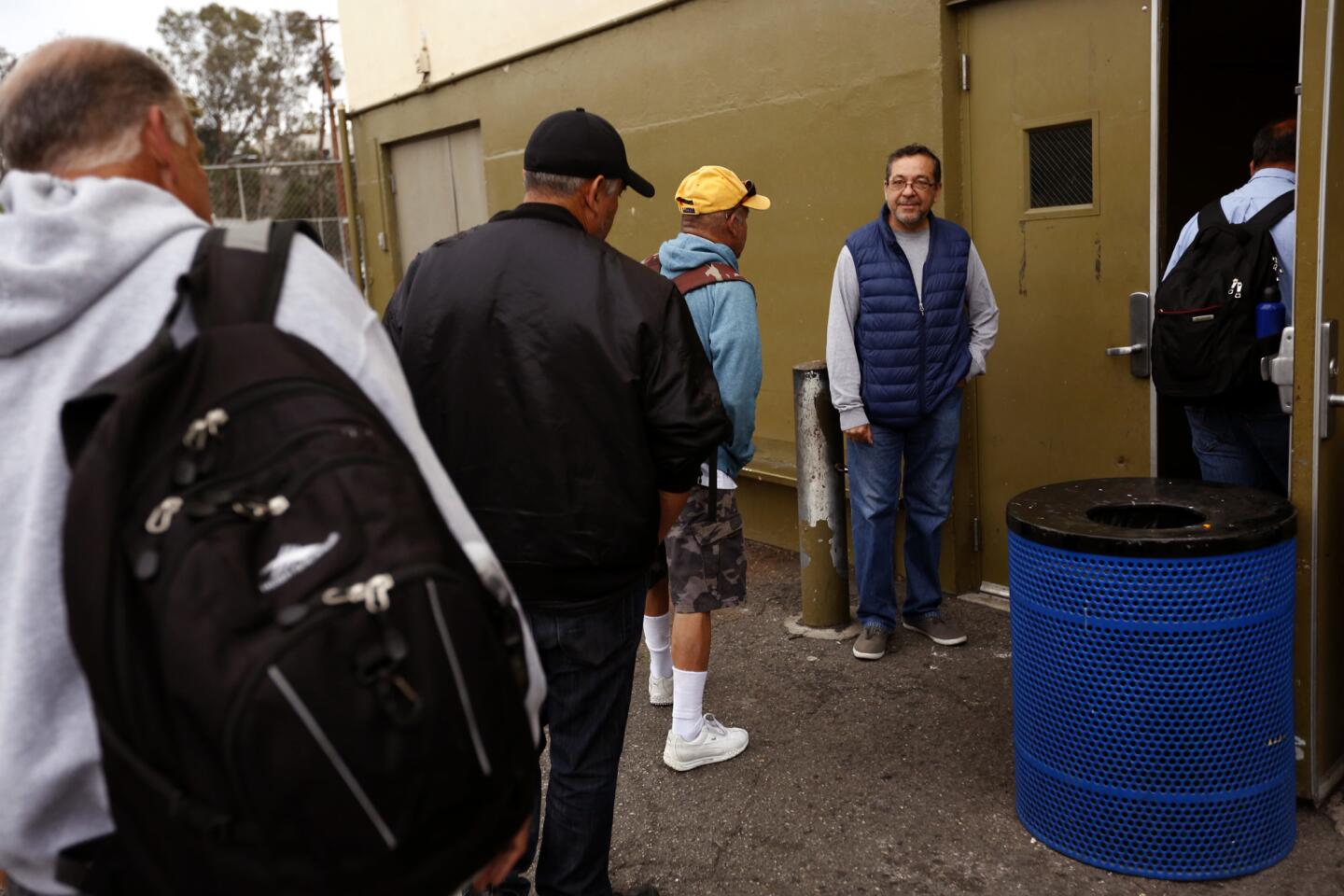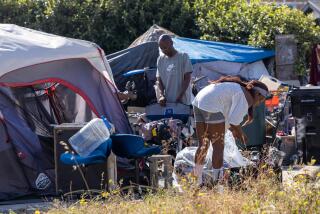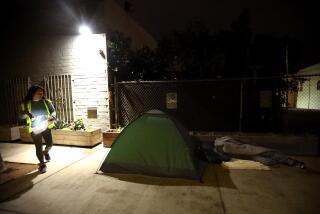Surge in Latino homeless population ‘a whole new phenomenon’ for Los Angeles
- Share via
Timoteo Arevalos never imagined he’d end up here, loitering for hours on a bench at Hollenbeck Park in Boyle Heights, using his backpack as his pillow.
He used to have a government job, but the recession hit and he was laid off. He then tried to scrape by as a dishwasher, but last fall his hours were cut and he couldn’t pay his rent.
Now, he is part of a rising number of Latinos who are living homeless in Los Angeles. Recent figures released by the county show that Latino homelessness shot up by 63% in the past year, a staggering number in a county that saw its overall homeless population soar by 23%, despite increasing efforts to get people off the street.
Nearly every demographic, including youth, families and veterans, showed increases in homelessness, but Latinos delivered one of the sharpest rises, adding more than 7,000 people to the surge.
“I would say it’s a whole new phenomenon,” said County Supervisor Hilda Solis, whose district saw Latino homelessness go up by 84%. “We have to put it on the radar and really think outside the box when we consider how to help this population.”
Homeless officials and outreach groups say Los Angeles’ rising rents and stale wages are the main drivers pushing many out of their homes.
According to a study released by the Homeless Services Authority, renters living in Los Angeles are the most cost-burdened nationwide. More than 2 million households in L.A. and Orange counties have housing costs that exceed 30% of their income.
Latinos are particularly at risk, with many working up to two to three low-paying jobs to make ends meet. Those lacking legal status are more vulnerable these days as they struggle to find work and avoid public assistance, which they fear could flag them for eventual deportation.
“It’s like they live with one foot on a banana peel and the other one step from homelessness,” said Rose Rios, who runs Cover the Homeless Ministry, a South Los Angeles non-profit that feeds people in the streets, many of them Latino.
After Arevalos lost his government job, he lived off his $70,000 savings. When that dried up, he struggled to find a good-paying job. Eventually he settled for a dish washing gig, but when the restaurant cut back his hours last fall, he lost his Pico Rivera studio apartment.
Now, he receives $900 in unemployment, enough for food and clothes, but not quite to cover rent and bills. Most days, he sleeps in a secluded alley in Pico Rivera, not far from the roar of passing trains and cargo trucks. To bathe, he goes to Roosevelt High School’s public pool.
“I’m frustrated and sad,” Arevalos said. “Having to go up and down and starting over takes a lot out of you.”
Countywide, an estimated 20% of Latinos live below the poverty level. Their average household income is about $47,000.
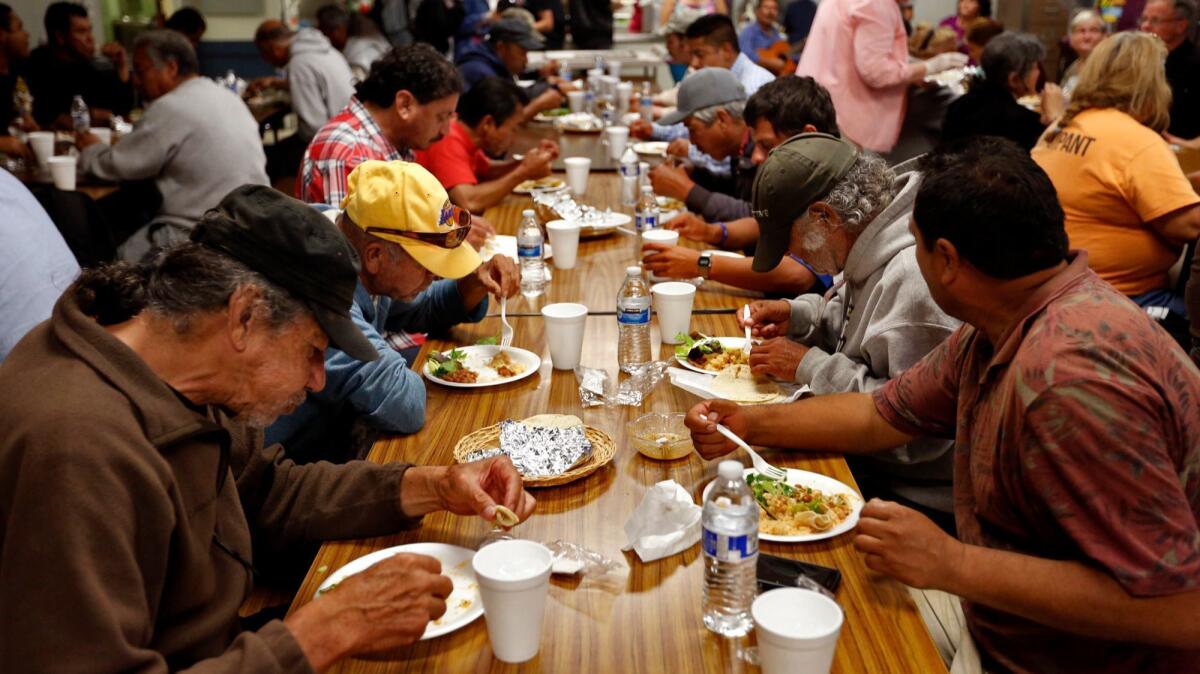
“This is a population that’s already living under very difficult circumstances,” said USC sociology professor Manuel Pastor. “When you increase rents, you really start to see a bigger impact.”
In 2016, Latinos made up 27% of the county’s homeless population; that number has rocketed to 35% in the last year. Latinos make up about 48% of the county’s overall population. The percentage of white homeless people declined 2% in that time.
African Americans saw a slight increase in the number of homeless, but while they make up 9% of L.A. County’s overall population, they still represent a disproportionate 40% of the county’s homeless.
This year’s homeless count, conducted in January, showed significant increases in the newly homeless, homeless youth and homeless living in cars. These figures seem to support the idea that the surge in Latino homelessness is made up of working poor who might have been priced out by the market, Pastor said.
Solis has noticed the difference as she drives around her district in East Los Angeles and parts of the San Gabriel Valley. She has seen more Latinos who apparently live in the riverbeds and freeway underpasses.
The supervisor said she hopes that the needs of homeless Latinos are taken into account as funds from Proposition HHH and Measure H are allocated over the next decade. The ballot measures approved by Los Angeles voters in November are expected to provide several billion dollars in housing, rent subsidies and services to the homeless.
“A lot of Latinos tend to come from tight-knit communities and don’t like talking about how they’re struggling,” Solis said.
Many tend to not seek help from shelters and homeless outreach centers, such as the ones located in downtown L.A.’s skid row. They try to subsist, relying on relatives, friends, churches, clinics, all while living out of their car or in the street.
“We need service providers who reflect the community, who provide competent, culturally sensitive information in Spanish,” Solis said.
At a church east of the Los Angeles River on a recent evening, nearly three dozen men sat around the courtyard, waiting for a warm meal and a place to spend the night. Most sleep in cots that line the church temple, near the altar and by the doors.
The men, all Latinos and some of them lacking legal status, have been coming here for nearly 30 years to seek emergency shelter.
Among them was Mario Martinez, 48, from Guatemala. He came to the U.S. when he was 17 years old.
He worked in factories and construction sites, eventually landing a job as a manager of a fabric and textile warehouse. He made $18 an hour.
Martinez and his girlfriend and their two children, ages 4 and 10, used to rent an apartment in Montebello for $1,400 a month.
“I had started from the bottom and worked my way up,” he said.
But life took a turn and he and his girlfriend separated. Five years ago, he lost his job.
Work since then has been tough to come by and it’s paid much less. When Martinez depleted his $15,000 in savings a few months ago, he ended up in the street.
He hopes part-time work through an employment agency will help him get back into an apartment soon.
“I’m the kind of person who takes life as it comes,” Martinez said. “As long as you’re healthy and able to work and get sleep, you’re able to get back up.”
The church also provides similar assistance to Latinas.
In other parts of the city, several districts that have experienced gentrification saw Latino homelessness rise. That includes Councilman Gil Cedillo’s 1st District, where there was a 79% increase.

District 1 includes densely populated neighborhoods such as Pico-Union and Westlake, where many poor families crowd into high-rise apartments. The area’s proximity to downtown has made it enticing for developers in recent years, pushing rents up for many people.
At the center of Westlake, MacArthur Park has become a go-to destination for homeless from across the region. Their tents are spread across the 32-acre park, creating an endless cycle that doesn’t ease despite weekly outreach efforts conducted by Cedillo’s office and numerous organizations.
“The problem is a lack of sufficient housing stock,” Cedillo said. “People are very compassionate and concerned about the homeless, but what we need to do is get out of the developers’ way and begin to create a process so people can build and neighbors need to embrace this.”
In Highland Park, another area represented by Cedillo, gentrification has vastly spiked housing prices. Two-bedroom homes sell for more than $600,000.
In 2009, Rebecca Prine founded Recycled Resources for the Homeless, a nonprofit outreach group that connects the homeless to housing and provides basic services, such as free laundry on Wednesday nights.
In the winters, the organization opens a shelter, the only one in the neighborhood. This past year, Prine said the shelter was filled mostly with Latinos. Many of them held down full-time jobs. But they couldn’t afford the rents. Others were older residents with fixed incomes.
“From one year to the next,” Prine said, “the face of homelessness changed for us.”
To read the article in Spanish, click here
MORE ON HOMELESSNESS
L.A.-area Muslims to help homeless on skid row in final days of Ramadan
L.A. Council to consider settlement over alleged campaign to discard skid row property
Opinion: Shame on L.A. if it hosts the Olympics without solving its homelessness problem first
More to Read
Sign up for Essential California
The most important California stories and recommendations in your inbox every morning.
You may occasionally receive promotional content from the Los Angeles Times.
